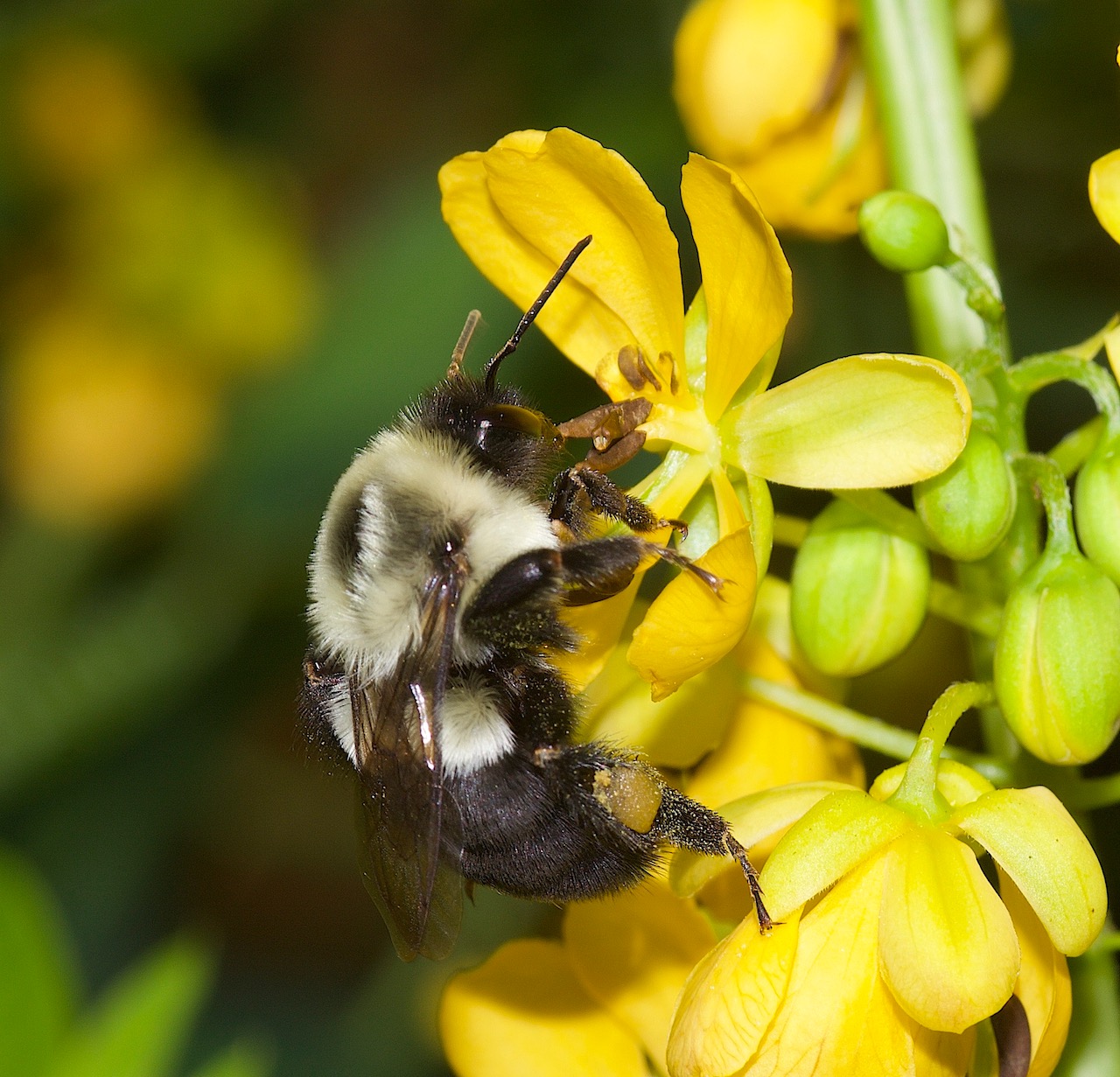A Common Eastern bumble bee partaking of the pollen of a Southern wild senna (Senna marilandica) on a sunny-but-cool-for-August morning—what a pleasant surprise! While clearing out the jungle in my backyard, I discovered that the senna serves a dual purpose—as a hostplant for the Clouded Sulphur, Little Yellow and Sleepy Orange (I knew of these already) and as a useful plant for bumble bees. The bees are sonicating and gathering pollen as the flower produces no nectar. There are, however, small nectarines at the base of the leaves.
Southern wild senna has to be controlled in my back yard as it has a tendency to spread somewhat aggressively, but not crazy aggressively. It will form a small colony. You can cut off the seed pods to help with the spreading or just keep it pulled back to the area where you want it.
The bumble bees will happily use the pollen to provide for their young.
